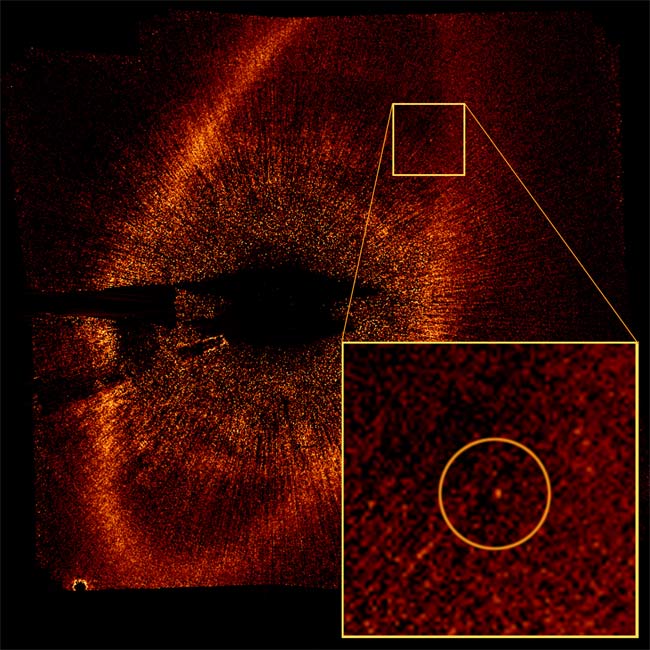Big news today...we officially have the first images of planets orbiting other Sun-like stars! It was only a matter of time, and we are now there.
Exhibit A is from the Hubbls Space Telescope.
The star is blocked out by a small bar (literally) called an occulting bar. The star is so bright we need to block its light to see the dim planet nearby. That little speck of light is the planet! It may not look like much, but it has been imaged multiple times to confirm it really is a planet in orbit around the star. The star itself is called Fomalhaut and is one of the brightest stars in the sky.
The next example orbits the star with a much more obscure name, HR8799. The big news here is we can see THREE PLANETS!
Note the three red dots in the image at the right. This image was taken in the infrared. Planets give off a lot more light in the infrared so they are easy to detect in an infrared image. Even the closest of the three planets is about 3.8billion km from the Sun (close the distance of Uranus from the Sun.) In other words, theere is plenty of room for more planets closer to this star...maybe small, rocky, planets like...well, let's not get carried away yet!
Once we found the first extrasolar planet, the pace of discoveries rapidly increased. Now that we have the first images, I hope we do as well at getting more!Reprinted with permission from the Half-Astrophysicist Blog.







5 comments:
Oculting Bar.....Sounds like a place I got thrown out of "up nort" in my younger years.
Very interesting HB. Do you think they're peeking back at us?
Just saw this on the nightly news... but I saw it here first! Thanks, hale, for keeping us #1!
I wish I could be around when we visit a few.
logjam, they've been visiting us for years. In fact, I've met a few in bars up nort.
This is really neat! It makes me wonder more about what's out there.
Probably no one on these planets looking back...these are located far from the star, probably are gas giants, and too cold for life like us. Additionally, these are young systems that, if life is evolving like it did on Earth, would still have mostly single cell organisms.
However, there could be more small planets located close to the stars (which I am sure we will be looking for as technology improves). If we find them and wait a couple of billion years...well a big maybe then!
Post a Comment